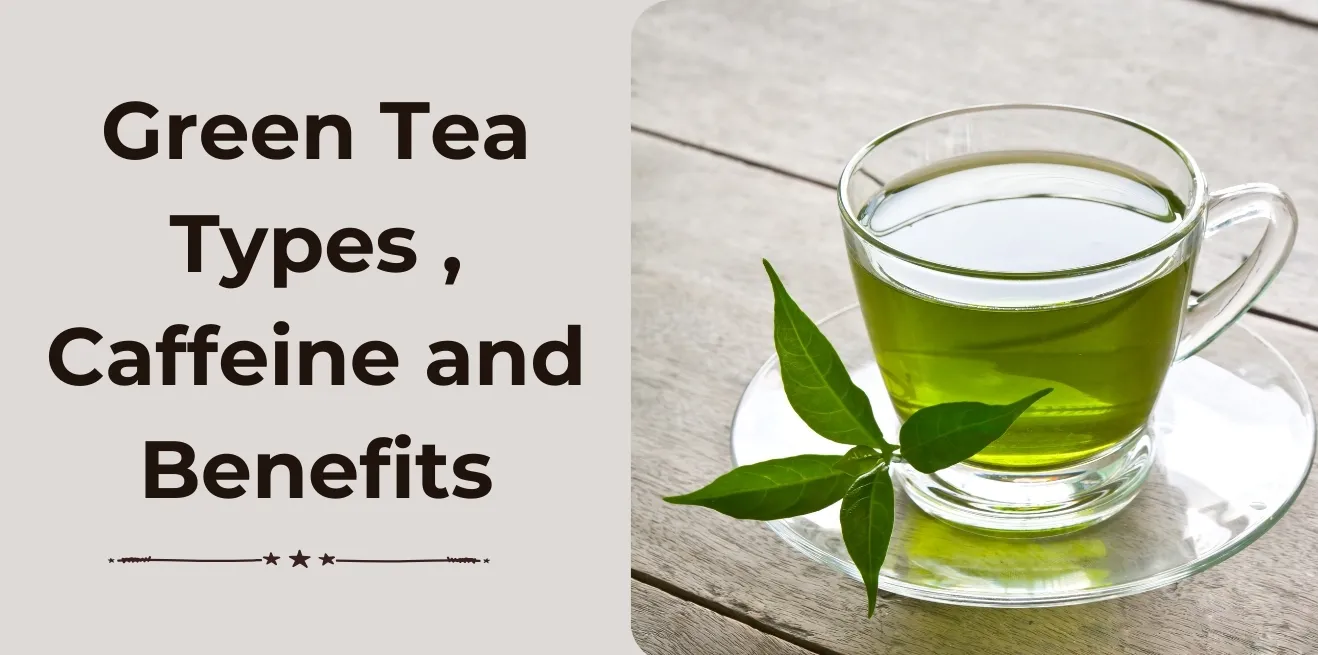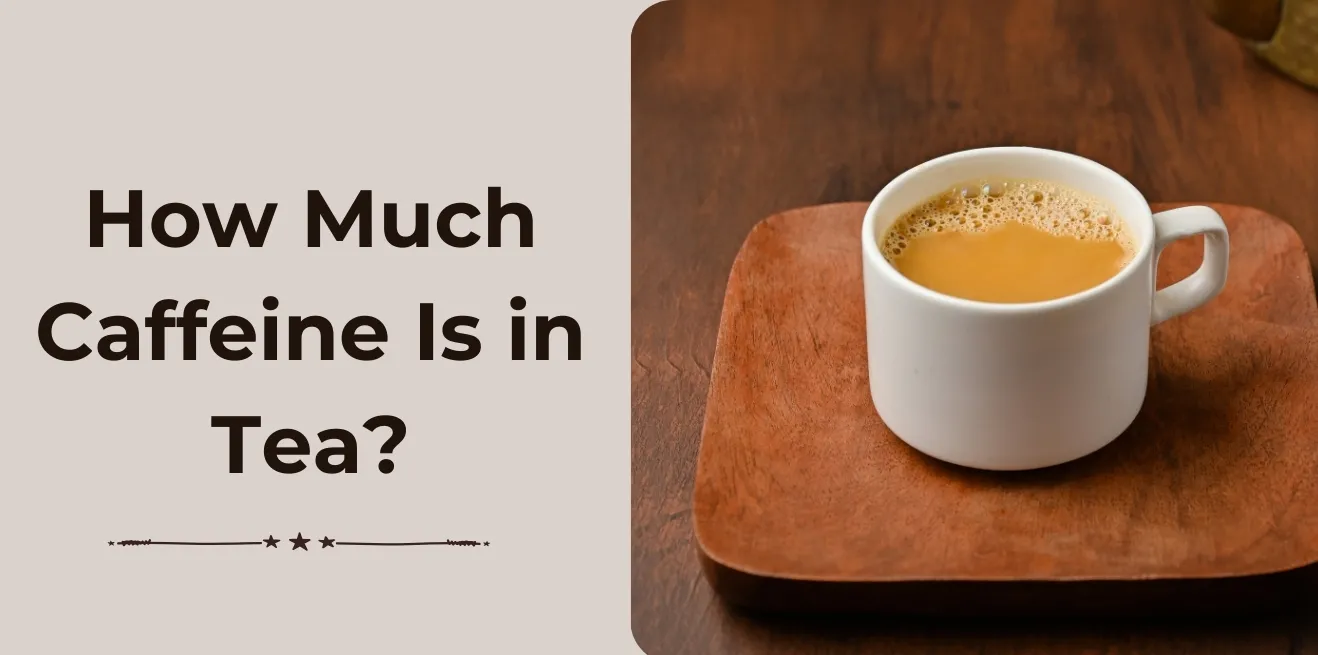What Is Tea?
Tea is one of the oldest drinks in the world. Tea is a drink made by steeping dried leaves from the Camellia sinensis plant in hot water. It can be served hot or cold and comes in many types like green, black, white, oolong, and pu-erh.
Brief Origin of Tea
Tea has a long history that began thousands of years ago in China. According to legend, a Chinese emperor discovered tea when leaves from a nearby tree blew into his pot of hot water. He tasted the water and liked the flavor. From that moment, tea became a popular drink and slowly spread to many other parts of the world.
The Camellia sinensis Plant
All real tea comes from a single plant called Camellia sinensis. This plant grows best in warm, rainy places like China, India, Sri Lanka, and Japan. Farmers pick the leaves when they are ready, and those leaves are used to make all types of tea.
How Different Teas Are Made from the Same Leaf
Even though all tea leaves come from the same plant, the way they are processed after picking creates different types of tea.
- Green tea is made by heating the leaves right away to stop them from changing color. This keeps the leaves green and gives the tea a light, fresh taste.
- Black tea is made by letting the leaves fully oxidize. This turns them dark and gives the tea a strong, bold flavor.
- Oolong tea is partly oxidized, so it falls between green and black tea in both taste and color.
- White tea uses young leaves and buds. It is the least processed and has a soft, delicate flavor.
- Pu-erh tea is made through a special aging process that gives it a deep, earthy taste.
Each tea is made differently, but they all start with the same leaf.
🍵 Main Types of Tea
Tea comes in many forms, but all true teas come from one plant: Camellia sinensis. What makes each tea different is how the leaves are processed after picking. Each type has its own flavor, color, caffeine level, and health benefits. Let’s explore the main types of tea you’ll come across.
🍃 Green Tea
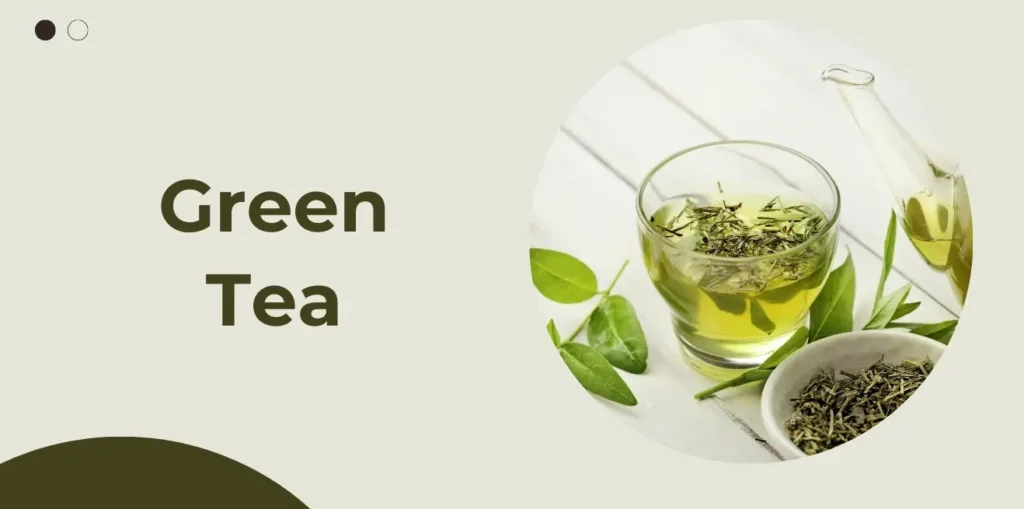
Green tea is made by heating the leaves soon after picking. This step prevents oxidation, which helps keep the tea green and full of natural compounds. The flavor is fresh, grassy, and sometimes slightly sweet or nutty, depending on the type.
People love green tea for its high antioxidant content, especially a powerful one called EGCG. It’s linked to benefits like better brain function, weight support, and protection against cell damage. Green tea contains caffeine but usually less than black tea.
Popular types include sencha, matcha, and gunpowder. Matcha, in particular, is known for its bright green color and use in Japanese tea ceremonies.
👉 Learn more in our guide on [Green Tea Benefits, Types & Caffeine Guide]
☕ Black Tea
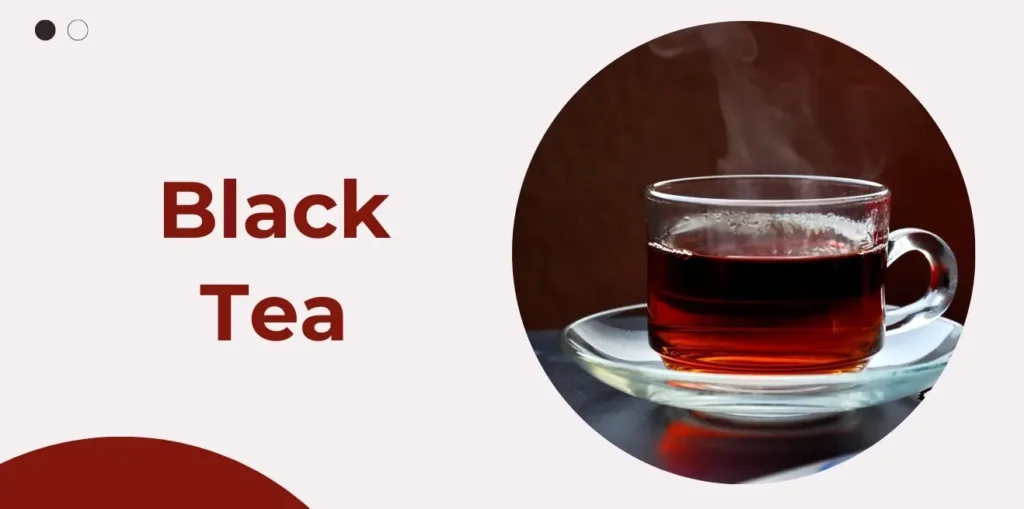
Black tea goes through full oxidation, which gives it a bold flavor and a deep reddish-brown color. It has more caffeine than green or white tea, making it a popular morning drink.
Black tea is often enjoyed with milk, honey, or lemon, and is also the base for many iced tea recipes. Some well-known types include Assam, Darjeeling, Ceylon, and English Breakfast.
It contains theaflavins, a group of antioxidants that may support heart health, blood pressure, and focus. If you’re looking for a tea that gives you both energy and flavor, black tea is a great choice.
👉 Read more in our full post on [Black Tea Types, Caffeine & Benefits]
🌼 White Tea
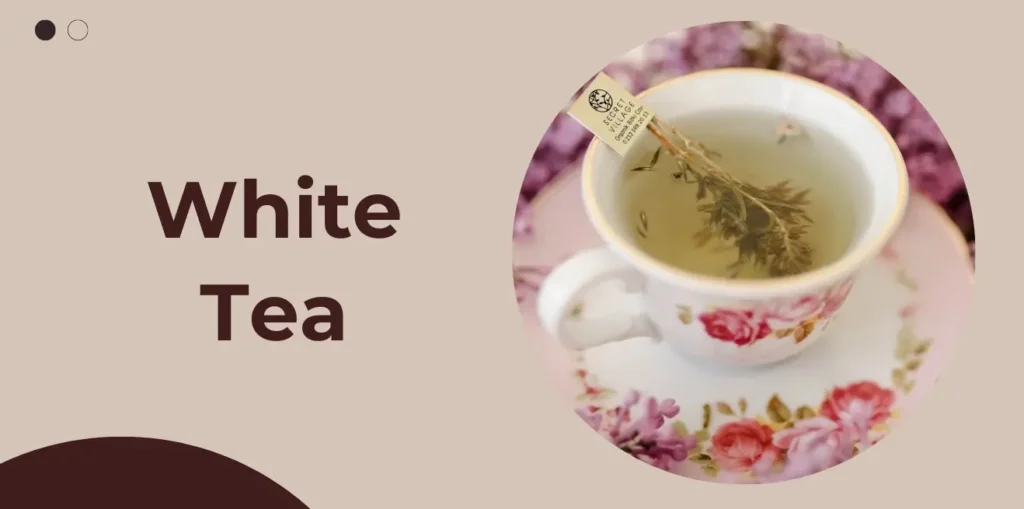
White tea is made from young tea leaves and unopened buds. It’s the least processed of all teas and is simply dried after picking. This keeps its flavor light, smooth, and slightly sweet.
It has the lowest caffeine content among true teas, making it a good option for people who want a gentle pick-me-up. Because it’s rich in antioxidants, white tea is often linked to anti-aging and skin health.
Famous types include Silver Needle and White Peony, both known for their mild yet rich taste.
👉 Discover more in our guide on [White Tea: Flavor, Benefits, Caffeine & Brewing]
🌸 Oolong Tea
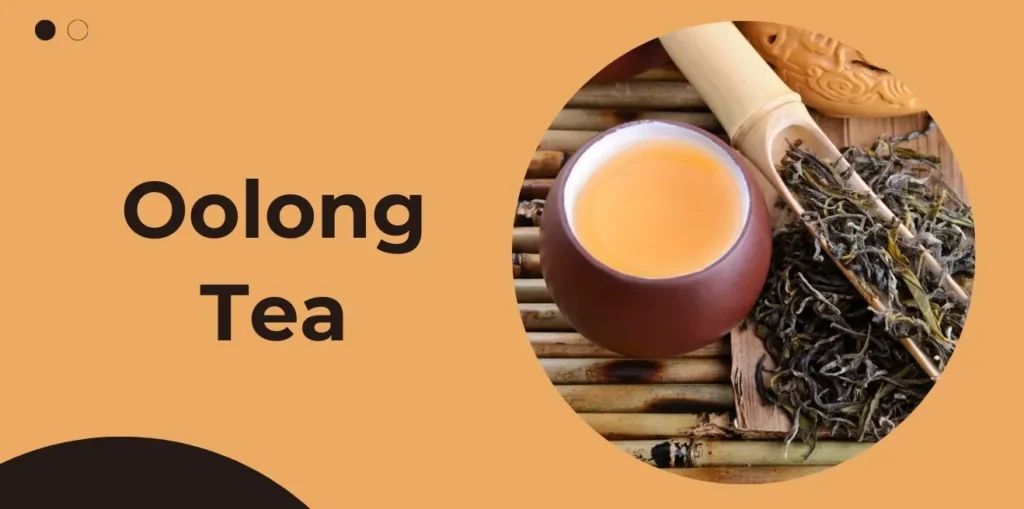
Oolong tea is partially oxidized, so it falls between green and black tea. The flavor depends on how long the leaves are oxidized—it can be floral and light or dark and toasty.
Oolong tea is popular in Chinese tea traditions, and it’s often brewed multiple times using the same leaves. It’s known for helping with digestion, mental focus, and metabolism.
Famous varieties include Tie Guan Yin and Da Hong Pao, both of which have rich cultural histories.
👉 Learn what makes oolong special in our article: [Oolong Tea: What It Is & Why It’s Unique]
🌿 Pu-erh Tea
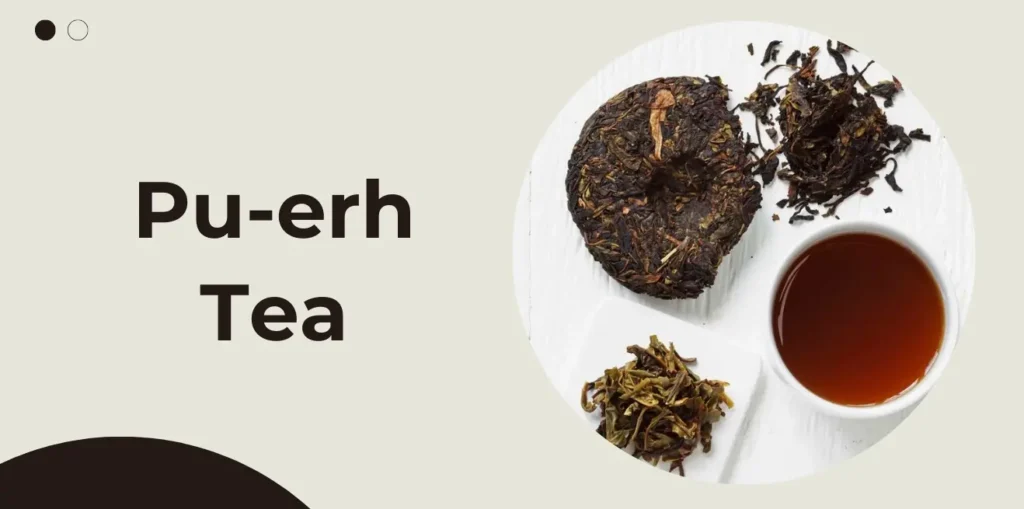
Pu-erh tea is fermented and aged, sometimes for several years. This gives it a deep, earthy taste that becomes smoother over time. It is often shaped into tea cakes or bricks and can be brewed many times.
People drink pu-erh for its bold flavor and for possible benefits like better digestion and lower cholesterol. It’s especially popular in China, where aged pu-erh is considered a delicacy.
👉 Explore the world of aged tea in [Pu-erh Tea Benefits & How to Brew It]
🍯 Herbal Teas (Not True Teas)
Herbal teas are made from plants, herbs, fruits, flowers, and roots. They do not contain leaves from the tea plant, so they’re not “true” teas. However, they are widely loved for their taste and health benefits.
Most herbal teas are naturally caffeine-free, making them great for drinking in the evening or before bed. Popular choices include:
- Chamomile – calming and good for sleep
- Peppermint – helps with digestion
- Hibiscus – supports heart health
- Rooibos – rich in antioxidants and caffeine-free
👉 See the full list in [Herbal Tea Types, Benefits & Caffeine-Free Options]
⚡ Does Tea Have Caffeine?
Tea naturally contains caffeine, but the amount depends on the type of tea and how it’s made. Caffeine is a natural compound that helps you feel more awake and focused. Some teas have a lot of it, while others have very little—or none at all.
🟢 Green Tea
Green tea usually has less caffeine than black tea but more than white tea or herbal teas. The exact amount depends on the type of green tea and how you brew it. For example, matcha has more caffeine because you consume the whole powdered leaf. Other types like sencha or bancha tend to have moderate levels.
If you’re wondering exactly how much caffeine is in your cup and how to reduce it while brewing, check out [Does Green Tea Have Caffeine?]
⚫ Black, White, and Oolong Teas
Black tea has the highest caffeine among true teas, especially strong types like Assam or English Breakfast. Oolong tea falls in the middle, with a wide range of caffeine depending on how it’s processed. White tea usually has the least caffeine, but that can vary based on leaf size and brew time.
To see how they compare and what affects their caffeine levels, visit our breakdown of [Caffeine in Black, White, and Oolong Teas]
🌿 Herbal Teas
Most herbal teas are naturally caffeine-free because they aren’t made from the tea plant. Instead, they use ingredients like chamomile, peppermint, rooibos, or lemon balm, which don’t contain caffeine at all. These teas are great for relaxing, especially at night.
If you want to learn which herbal teas are 100% caffeine-free (and which ones might surprise you), read more in [Does Herbal Tea Have Caffeine?]
⚖️ Caffeine in Tea vs Coffee vs Energy Drinks
Many people drink tea, coffee, or energy drinks to feel more awake. All three have caffeine, but the way they affect your body can be very different. The amount of caffeine and how it works in your system depends on the drink you choose.
📊 Caffeine Comparison Chart
Here’s a simple chart to show how much caffeine is in common drinks (per 8 oz cup or can):
| Drink Type | Average Caffeine (mg) |
|---|---|
| Black Tea | 40–70 mg |
| Oolong Tea | 30–50 mg |
| Green Tea | 20–45 mg |
| White Tea | 15–30 mg |
| Herbal Tea | 0 mg (usually) |
| Coffee | 80–120 mg |
| Energy Drinks | 70–160 mg |
Keep in mind that these numbers can change depending on the brand and how the drink is made.
🧠 Slow vs Quick Energy Boost
Even though tea usually has less caffeine than coffee or energy drinks, many people say it gives them longer, steadier energy. That’s because tea contains an amino acid called L-theanine, which helps your body absorb caffeine more slowly. This can lead to better focus and calm alertness without the sudden crash that coffee or energy drinks sometimes cause.
Coffee and energy drinks deliver a quick caffeine hit. You may feel more alert right away, but it can also cause jitters or a fast heart rate in some people, especially if they drink too much.
If you’re trying to decide which one fits your lifestyle or energy needs, we’ve compared their effects in detail in [Tea vs Coffee: Which Is Better?]
💚 Health Benefits of Tea
Tea is more than a comforting drink — it also offers many health benefits. From supporting your heart to helping your stomach feel better, different types of tea can help you feel your best. While each type of tea is unique, most of them share common nutrients that are good for your body and mind.
🛡️ Antioxidants: EGCG, Theaflavins & More
Tea is packed with antioxidants, which are natural compounds that protect your cells from damage. These antioxidants fight off harmful substances in your body called free radicals.
- Green tea is rich in EGCG, one of the most studied antioxidants. It may help lower inflammation and support metabolism.
- Black tea contains theaflavins, which may protect the heart and reduce cholesterol.
- White and oolong teas also contain helpful antioxidants, though in different amounts.
These antioxidants are a big reason why many people drink tea daily. They support your body’s natural defenses and may even help with weight control. To explore this more, check out [Is Green Tea Good for Weight Loss?]
❤️ Heart Health
Drinking tea regularly may be good for your heart. Studies suggest that black and green teas may help:
- Lower bad cholesterol (LDL)
- Improve blood vessel function
- Reduce the risk of heart disease and stroke
The antioxidants in tea help relax blood vessels and may lower blood pressure over time. While tea isn’t a cure, adding it to a healthy lifestyle can give your heart extra support.
🧠 Brain Function & Focus
Tea contains caffeine and L-theanine, a natural amino acid. Together, they can help you stay alert without feeling jittery. This mix is what makes tea a favorite for people who want to stay focused but calm.
Green tea and oolong tea are especially popular for this reason. People often drink them when they need to study, work, or concentrate for long hours.
Some research even shows that tea may support brain health as we age by protecting memory and mental clarity.
🍽️ Digestive Aid
Tea has been used for centuries to help with digestion. Some types, especially herbal teas, are known to calm the stomach, reduce gas, and support regular bowel movements.
- Peppermint tea helps relax stomach muscles
- Ginger tea may reduce nausea
- Chamomile tea can ease bloating and calm the gut
- Oolong and pu-erh teas may help with fat digestion
To find out which teas are best for your stomach and when to drink them, visit our full guide on [Best Tea for Bloating or Digestion]
🩺 Tea and Health Conditions
Tea is a gentle, natural drink, but like anything else, it’s important to know how it affects your body—especially if you’re dealing with specific health conditions. Different teas can support sleep, calm nerves, help during pregnancy, or even be suitable for kids. At the same time, some teas might need to be avoided depending on your health.
Let’s look at how tea connects to different health needs.
🌙 Tea for Anxiety or Sleep
Many people turn to tea when they feel stressed or have trouble sleeping. Some teas have natural calming effects that help the body and mind relax.
- Chamomile tea is one of the most popular bedtime teas. It can help you feel calm and sleepy.
- Lavender tea is known for its soft floral scent that can ease anxiety.
- Lemon balm and passionflower teas may help reduce restlessness and quiet the mind.
These teas are naturally caffeine-free and safe to drink in the evening. To explore calming tea options and when to drink them, visit [Best Teas for Anxiety, Sleep & Relaxation]
🤰 Tea During Pregnancy
If you’re pregnant, it’s important to know which teas are safe. Some herbal teas are helpful during pregnancy, while others should be avoided.
- Ginger tea can help ease nausea in the first trimester.
- Peppermint tea is often used for bloating and heartburn.
- Rooibos tea is caffeine-free and packed with antioxidants.
However, teas like licorice root, sage, or certain detox blends can cause problems during pregnancy. It’s always best to check with a doctor before trying a new tea while pregnant.
For a full list of safe and unsafe teas during pregnancy, read [Is Tea Safe During Pregnancy? What to Know]
👶 Tea for Kids
Not all teas are right for children, especially those that contain caffeine. But some herbal teas can be safe and helpful in small amounts.
- Chamomile tea may help calm a child before bed.
- Peppermint tea can soothe an upset stomach.
- Rooibos tea is a kid-friendly option that’s naturally sweet and caffeine-free.
Avoid giving kids teas with caffeine like green, black, or oolong unless advised by a healthcare provider. If you’re unsure which teas are okay, check our detailed breakdown in [Can Kids Drink Tea? Safe Options Explained]
❤️🩹 Can Tea Raise Blood Pressure?
Most teas are not harmful for blood pressure, and some may even help lower it. Green and black teas have been shown to support heart health over time when consumed in moderation.
However, highly caffeinated teas, or drinking large amounts of strong tea, could raise blood pressure in sensitive individuals. Also, some herbal teas—like licorice root—may affect blood pressure levels and should be used carefully.
To understand which teas support healthy blood pressure and which ones to limit, read [Tea and Blood Pressure: What You Need to Know]
🫖 Brewing Tea the Right Way
Brewing tea is simple, but small details can make a big difference in how your tea tastes—and how much caffeine is in tea. Each type of tea needs the right water temperature and steeping time. Using the proper method helps you get the best flavor and keeps the healthy parts of the tea intact.
🌡️ Water Temperature per Tea Type
Different teas need different water temperatures. If the water is too hot, it can make the tea taste bitter. If it’s too cold, the flavors might not come out at all.
Here’s a quick guide:
- Green tea: 160°F to 180°F (warm, not boiling)
- White tea: 170°F to 185°F
- Oolong tea: 180°F to 200°F
- Black tea: 200°F to 212°F (near boiling or boiling)
- Herbal tea: 212°F (boiling)
Letting water cool for a minute after boiling is a good trick for brewing green or white tea properly.
⏱️ Steeping Time Guide
Steeping time also affects how your tea tastes—and how much caffeine it releases. Brewing too long can bring out bitterness and raise caffeine levels. Brewing too short can make your tea weak.
Here’s what most teas need:
- Green tea: 1–3 minutes
- White tea: 2–4 minutes
- Oolong tea: 3–5 minutes
- Black tea: 3–5 minutes
- Herbal tea: 5–7 minutes (some up to 10)
For lighter flavor or less caffeine, stick to the lower end of the time range. Want to enjoy green tea without getting too much of a buzz? Read our helpful tips in [How to Brew Green Tea for Less Caffeine]
🍃 Loose Leaf vs Bagged Tea
Both loose leaf and bagged tea come from the same plant, but they can be very different in quality and taste.
- Loose leaf tea often uses whole or large tea leaves. It has more flavor, better aroma, and more room to expand in water.
- Bagged tea is usually made from broken leaves or dust. It brews faster but may taste flat or bitter, especially if over-steeped.
If you’re looking for a fuller, smoother cup, loose leaf is the way to go. All you need is a tea strainer or infuser. But if you’re in a hurry, a tea bag still does the job.
🌈 Tea Varieties and Flavored Teas
Tea doesn’t only come in plain green or black. Many teas are blended with spices, flowers, or natural flavors to create exciting new tastes. These varieties are loved around the world and offer fun ways to enjoy tea, whether hot or cold.
🍵 Popular Flavored Teas
Some teas are mixed with herbs, oils, or natural scents during or after processing. These are known as flavored teas, and each has its own special character:
- Chai is a bold black tea mixed with spices like cardamom, cinnamon, ginger, and cloves. It’s often brewed with milk and sugar for a creamy, warming drink.
- Jasmine tea is usually green or white tea scented with jasmine blossoms. It has a sweet floral aroma and a smooth taste.
- Earl Grey is black tea flavored with bergamot oil, which gives it a bright, citrusy note.
- Matcha is a powdered green tea that’s whisked into water instead of steeped. It’s rich, creamy, and high in caffeine and antioxidants.
Flavored teas offer both taste and tradition. If you want to explore more varieties, check out our full guide on [Flavored Teas Explained: Chai, Jasmine, Earl Grey & More]
❄️ Iced Tea vs Hot Tea

You can enjoy tea hot or cold, and both versions have their own charm.
- Hot tea brings out deep flavors and is often soothing and calming.
- Iced tea is refreshing, especially in warm weather. It’s made by brewing the tea and then cooling it over ice.
You can make iced tea from black, green, oolong, or herbal teas, and even add lemon, mint, or fruit for extra flavor. Want to keep your iced tea bold and not watered down? Learn the tricks in [How to Make Iced Tea That Still Tastes Great]
🧋 What About Bubble Tea?

Bubble tea (also called boba tea) is a sweet drink that started in Taiwan. It’s made with milk tea and chewy tapioca pearls. Some versions use green or black tea, while others skip tea entirely and use juice or flavoring instead.
- If it has green, black, or oolong tea, bubble tea usually contains caffeine.
- If it’s made with fruit juice or herbal ingredients, it may be caffeine-free.
Not sure how to tell if your boba drink has caffeine? We explain the differences clearly in [Is Bubble Tea Caffeinated? What to Know]
🌿 Decaf & Caffeine-Free Tea Options
Not everyone wants caffeine in their cup. Whether you’re sensitive to it, avoiding it at night, or just prefer something gentler, there are many tea options that are naturally caffeine-free or specially processed to remove caffeine.
🍯 Herbal Teas (Naturally Caffeine-Free)
Herbal teas are the best choice for a truly caffeine-free experience. They are made from flowers, herbs, fruits, roots, or spices, and not from the Camellia sinensis plant (the tea plant that makes green, black, oolong, etc.).
Here are a few popular herbal teas that are naturally free of caffeine:
- Chamomile – known for calming effects and helping with sleep
- Peppermint – good for digestion and clearing the mind
- Rooibos – a red tea from South Africa, rich in antioxidants and naturally sweet
- Hibiscus – tart and fruity, may help support heart health
- Ginger tea – warming and soothing for the stomach
These teas can be enjoyed any time of day without affecting your sleep or energy levels.
🔄 What About Decaf Teas?
Decaffeinated teas are made from regular tea leaves (like green or black) but go through a special process to remove most of the caffeine. However, keep in mind that decaf doesn’t mean 100% caffeine-free—there may still be small amounts left.
If you’re choosing between herbal and decaf, herbal teas are the safer choice if you want to avoid caffeine completely. But decaf versions of green and black tea are a good option for those who still want the taste of true tea without most of the buzz.
To see a full list of the best caffeine-free options to try, check out [Caffeine-Free Teas List (Best Options to Try)]
Conclusion: Why Tea Deserves a Spot in Your Daily Routine
Tea is more than just a warm drink—it’s a natural source of comfort, energy, and wellness. Whether you want a morning boost, a calming bedtime ritual, or something to ease digestion, there’s a tea that fits your lifestyle.
From green and black teas that support heart and brain health, to herbal blends that help you sleep or soothe your stomach, the variety is endless. You can enjoy it hot or iced, with caffeine or without, flavored or plain. And when brewed right, it becomes a healthy habit that’s easy to stick with.
🔗 Explore More:
- [Green Tea Benefits, Types & Caffeine Guide]
- [Herbal Tea Types, Benefits & Caffeine-Free Options]
- [Does Tea Have Caffeine?]
- [Health Benefits of Tea]
- [How to Brew Tea the Right Way]
Frequently Asked Questions About Tea
Q.1 Can I drink tea every day?
Yes, most people can safely drink tea every day. In fact, drinking tea regularly may support your heart, brain, digestion, and immune system. Green tea and black tea offer antioxidants and mild caffeine. Herbal teas like chamomile or peppermint are great for calming your body and are caffeine-free.
If you’re drinking large amounts of strong black or green tea, it’s best to balance it out and stay hydrated.
Q.2 Does tea stain your teeth like coffee?
Tea can stain your teeth over time, especially black and dark oolong teas, which contain more tannins. These natural compounds can stick to your enamel and cause yellowing. But tea stains are usually lighter than those from coffee, and you can reduce them by rinsing your mouth with water after drinking or using a straw.
Q.3 Is cold brew tea less caffeinated?
Yes, cold brew tea usually has less caffeine than hot-brewed tea. This is because it’s steeped slowly in cold water, which pulls out less caffeine and tannins. Cold brewing also makes the tea taste smoother and less bitter. This is especially helpful if you’re trying to enjoy tea without getting too much of a caffeine boost.


